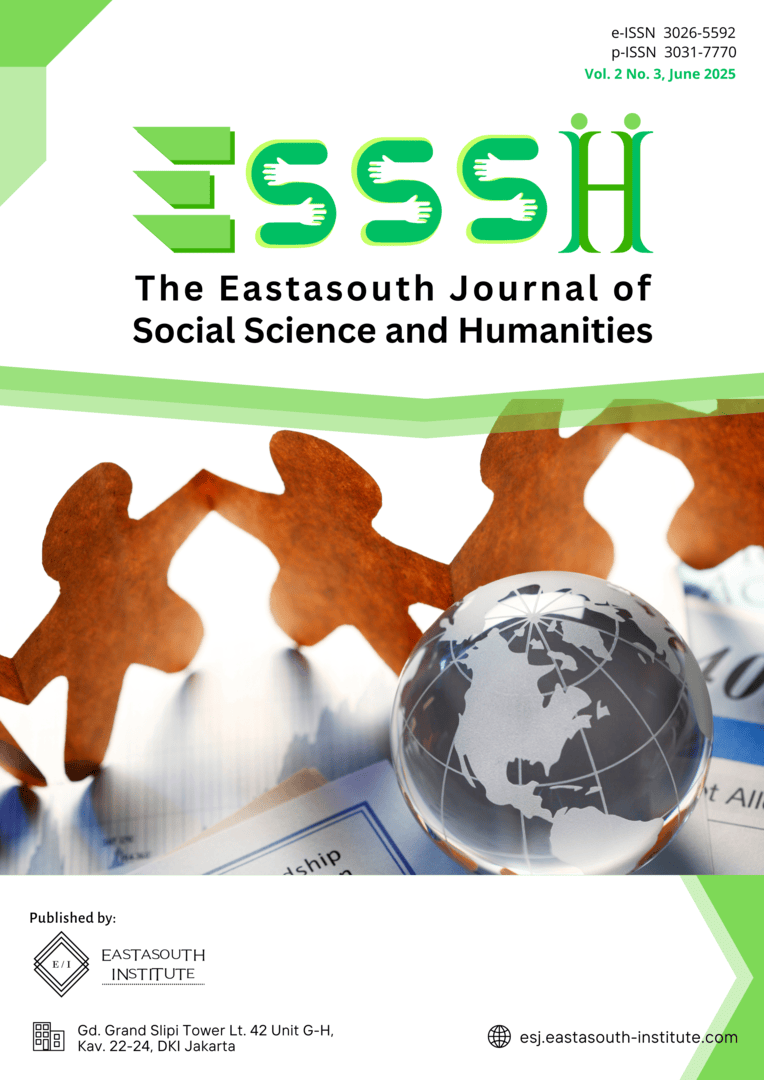Dry Text Reception as Digital Body Language on WhatsApp: A Study of Meaning Interpretation Based on Stuart Hall’s Reception Theory
Main Article Content
Abstract
This study investigates the reception of “dry text” as a form of digital body language and the understanding of message meaning among WhatsApp users. In the evolving digital communication landscape, the absence of explicit non-verbal cues in text-based interactions, often referred to as “dry text,” presents unique challenges to message interpretation. Using a qualitative descriptive approach grounded in Stuart Hall’s Reception Theory, this study analyzes the nuanced understanding of message meaning, considering the interplay between context, relationship dynamics, and the individual’s psychological state. The study findings reveal that the interpretation of “dry text” is highly subjective and context-dependent, with factors such as relational intimacy, communication history, and current mood significantly influencing reception. While some users interpret “dry text” as efficient, others perceive it as negative, indifferent, or even rude. This study highlights the critical role of users’ communicative competence in navigating ambiguous digital cues and the potential for miscommunication when non-verbal signals are absent. This study contributes to a deeper understanding of digital body language and the complexity of meaning-making in text-based communication.
Article Details

This work is licensed under a Creative Commons Attribution-ShareAlike 4.0 International License.
References
S. Kemp, “Digital 2025: Indonesia,” DataReportal.
D. Jones, “Take It From A Dry Texter: Short Messages Don’t Mean Someone Isn’t Interested,” British Vogue.
E. Ayan, “Descriptive analysis of emoticons/emoji and persuasive digital language use in WhatsApp messages,” Open J. Mod. Linguist., vol. 10, no. 4, pp. 375–389, 2020.
K. Gligorić, A. Anderson, and R. West, “Causal Effects of Brevity on Style and Success in Social Media,” in Proceedings of the ACM on Human-Computer Interaction, 2019, pp. 45, 1–23. doi: https://doi.org/10.1145/3359147.
S. A. Wang and B. N. Greenwood, “Does Length Impact Engagement? Length Limits of Posts and Microblogging Behavior,” 2020, doi: https://dx.doi.org/10.2139/ssrn.3536696.
C. Walters, “Guide to Digital Media in Marketing.”
T. Flew, New media: An introduction. Oxford University Press, 2008.
D. McQuail, Teori Komunikasi Massa. Jakarta: Salemba Humanika, 2011.
P. P. Syarifhidayat and H. Wicaksono, “Pemanfaatan Aplikasi WhatsApp (WA) di Kalangan Pelajar (Kasus di MTs Al Muddatsiriyah dan MTs Jakarta Pusat),” Pros. SNaPP Sos. Ekon. dan Hum., vol. 7, no. 1, pp. 98–109, 2017.
M. Jumiatmoko, “Whatsapp messenger dalam tinjauan manfaat dan adab,” Wahana Akad. J. Stud. Islam Dan Sos., vol. 3, no. 1, pp. 51–66, 2016.
WhatsApp LLC, “WhatsApp.”
H. Cangara, Pengantar ilmu Komunikasi. Jakarta: Raya Grafindo, 2004.
W. S. Zamzami, “Strategi Komunikasi Organisasi,” J. Educ. Res. Soc. Stud., no. 25–35, 2021.
A. Ghassani and C. Nugroho, “Pemaknaan Rasisme Dalam Film (Analisis Resepsi Film Get Out),” J. Manaj. Maranatha, vol. 18, no. 2, pp. 127–134, 2019.
S. Hall, D. Hobson, A. Lowe, and P. Willis, Culture, Media, Language: Working Papers in Cultural Studies, 1972-79, 1st ed. Routledge, 1980. doi: https://doi.org/10.4324/9780203381182.
S. Hall, D. Hobson, A. Lowe, and P. Willis, Culture, media, language: Working papers in cultural studies. New York: Routledge, 2006.
E. Dhawan, Digital Body Language: How to Build Trust and Connection, No Matter the Distance. New York: St. Martin’s Publishing, 2021.
J. W. Creswell, Qualitative inquiry and research design: Choosing among five approaches, 3rd ed. SAGE Publications, 2013.
“Mendeley-Desktop-1.”
E. Dhawan, Digital Body Language. South Tangerang: Bentara Aksara Cahaya, 2021.

